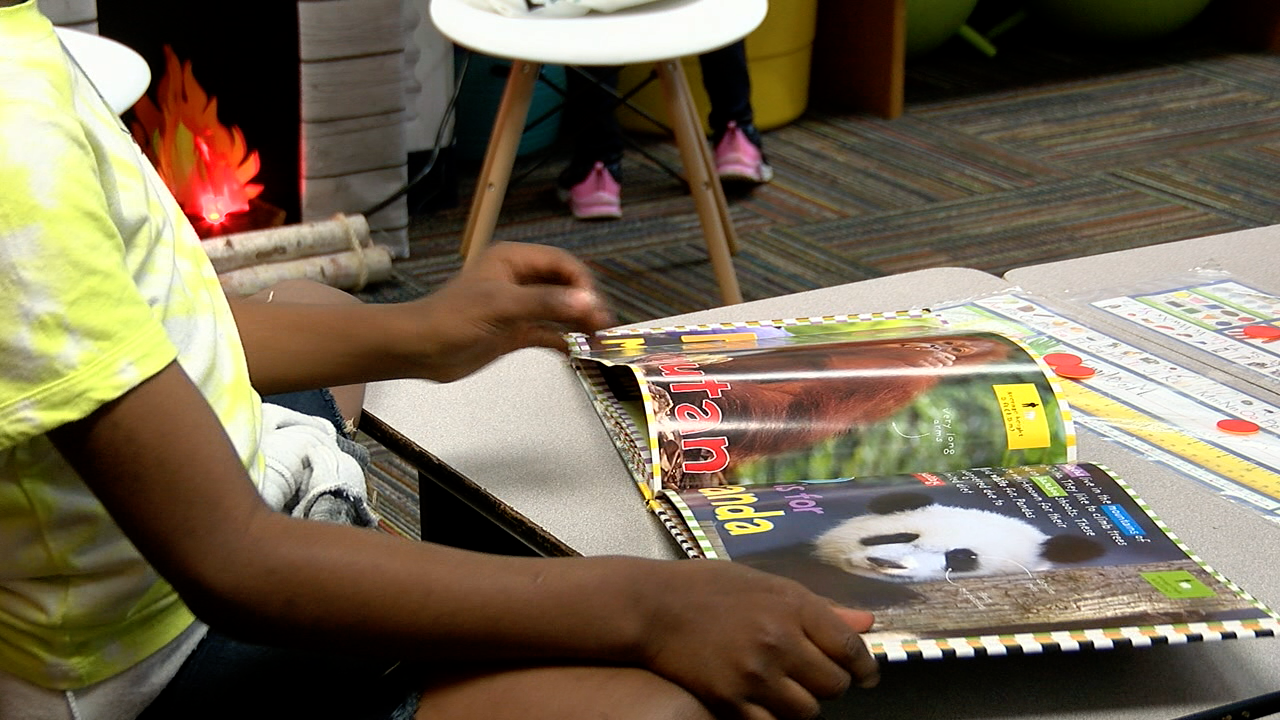INDIANAPOLIS — Learning to read is an essential part of growing up, but it's something Hoosier kids seem to be struggling with. Recent test scoresshow one in five third graders struggle to read.
In response to those statistics, Indiana lawmakers passed a bill in the last legislative session that is gradually changing how kids learn how to read in Indiana schools.
"We started noticing it when she was home on zoom having a lot of trouble paying attention and retaining and doing some of those tasks, “Emily Timmins told WRTV.
Timmins' daughter is in fourth grade. She started school in 2020, when COVID was in full swing, and while she could read some - there were certain aspects she was struggling with.
"We started exploring because her school at the end of last year they we are really noticing some struggling,” Timmins said. “They told me she can read well but her spelling and her phonics are still not where they should be grade appropriate.”
Timmins has been taking her daughter to a tutor to get her back on track and says she has been noticing a difference. However, she says outside school tutoring can be expensive and understand that everyone can’t afford to do that for their child.
According to tutor.com tutoring prices can range anywhere from $25 to $80 per hour.
“We are very fortunate that we have some extra income that we can spend privately to get our daughter caught back up,” Timmins said. "I am extremely privileged that we have that. Not everybody has any sort of additional money and we are talking thousands of dollars to spend on private tutoring much less the fact that I have a part time job so I can take her to these things. I have a flexible job that support working parents.”
Micah Wright was in a similar situation with her now third graders, she says she sought help for one of her daughters.
"We had a speech pathologist for our daughter,” Wright said. “They identified her having a bit of a lisp in her early Kindergarten years and so they worked with her to make sure that she had those foundational pronunciations so that she wasn't learning wrong or incorrect pronunciation from the beginning. "
The state does have resources for families who can’t afford to pay for a tutor themselves. Indiana Learns is a statewide enrichment grant program that supports reading and math growth for eligible young Hoosiers by funding tutoring. Eligible families who demonstrate both financial and academic need, can access up to $1,000 to spend with approved providers on high-dosage tutoring and approved out-of-school academic programs for their students.
“Even if parents have spent down that $1,000 in that high dosage tutoring we now have the ability to re-up that funding,” Dr. Katie Jenner the Indiana Secretary of Education said. “If they are using the funding to benefit their child for high dosage tutoring we want to do everything we can to continue to help them support their child.”
Programs like this is one of a number of ways that the state is working to support students struggling to meet education goals. By changing how students are taught how to the read the state is hoping for better outcomes. The science of reading focuses on five pillars. Those include phonics, phonemic awareness, fluency, comprehension, and vocabulary. Focusing on those aspects are something the Indiana Department of Education says research has shown works.
"Through brain research even in the last decade through the use of brain scans and different types of information we know how the brain interacts when we provide text,” Charity Flores, the Chief Academic Officer for the Department of Education said. “So, this is just another way through the learning of research we are able to apply different practices. "
One portion of science of reading teaches students to sound out the words while interacting with their teachers. A practice that the curriculum coordinator at Wayne Township schools says is working. They tell WRTV schools have seen a nine percent increase in their reading scores over the last two years.
"It's a wide variety of things for kids,” Anne Olson the Elementary Curriculum Coordinator for Wayne Township Schools said. “Some kids it is about phonemic awareness and phonics, for others it's about language and making sure that we have opportunities to expand their language and their ability to understand any texts they are reading through packets of knowledge through understanding that deep content."
Results like those that Wayne Township has received is why the state passed legislation to teach the science of reading in schools. That also includes teaching teachers how to instruct the curriculum.
"The science of reading and those strategies are absolutely happening in classrooms across our state,” Dr Jenner said. “It's not in every classroom yet though. That's where we have to do everything, we can to make sure every single, especially kindergarten through third grade teachers, special education teacher, English learner teachers has those strategies in science of reading. That way we can really maximize the support for kids and there is funding to help."
However, state officials say it’s important that parents work with their schools and teachers to make sure they know what specifically their child needs to succeed.
"We all have to work together,” Dr. Jenner said. “So we need parents and families with us and that means parents and families reading to their child or having their child read 20 to 30 minutes a day. That matters so much!"
According to the nations report card which comes out every two years. Indiana is average when it comes to reading scores, despite declining scores since 2015. According to the 2022 data 33 percent of Indiana fourth graders and 31 percent of eighth graders scored at or above proficiency




